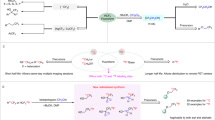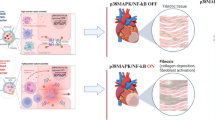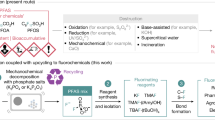Abstract
THE intensely toxic action of the rat poison sodium fluoroacetate (CH2F.COONa) upon the central nervous system and heart is of special interest because of the stability of the carbon – fluorine link. Bartlett and Barron1 have suggested that it competes with acetate ion in intermediary metabolism, and Saunders2 and colleagues that larger chain compounds of this type must be convertible to CH2F.CO to show toxicity. Recently Liébecq and Peters3,4, using centrifuged guinea pig kidney homogenates, have found that the oxidation of citrate formed from fumarate is inhibited by fluoroacetate. They have proposed the further hypothesis that this poison is metabolized like acetate and enters the tricarboxylic cycle, eventually 'jamming' this and causing accumulation of citrate.
This is a preview of subscription content, access via your institution
Access options
Subscribe to this journal
Receive 51 print issues and online access
$199.00 per year
only $3.90 per issue
Buy this article
- Purchase on SpringerLink
- Instant access to full article PDF
Prices may be subject to local taxes which are calculated during checkout
Similar content being viewed by others
Author information
Authors and Affiliations
Rights and permissions
About this article
Cite this article
BUFFA, P., PETERS, R. Formation of Citrate in vivo Induced by Fluoroacetate Poisoning. Nature 163, 914 (1949). https://doi.org/10.1038/163914b0
Issue date:
DOI: https://doi.org/10.1038/163914b0
This article is cited by
-
An ultrastructural study of the effects of fluoroacetate on hepatocytes
Zeitschrift f�r Zellforschung und Mikroskopische Anatomie (1971)
-
Das coenzym a und seine biologischen funktionen
Ergebnisse der Physiologie Biologischen Chemie und Experimentellen Pharmakologie (1957)
-
�ber Mechanismus und klinische Bedeutung der renalen Aminos�uren-Ausscheidung
Klinische Wochenschrift (1957)



